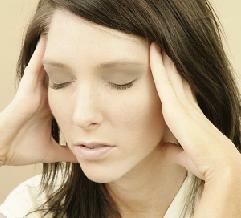 The term VSD is used only by doctors of the CIS countries in its practice, in the west such a disease is absent. In this regard, there is some confusion.
The term VSD is used only by doctors of the CIS countries in its practice, in the west such a disease is absent. In this regard, there is some confusion.
Some experts do not recognize the existence of vegetative-vascular dystonia in adults, others, on the contrary, consider it a conditional nosological form.
The complex of symptoms and causes of dystonia are extensive, therefore the examination should be comprehensive and qualified. Nevertheless, in most cases, the syndrome is not associated with any serious illness, being a sign of functional disorders.
So, what is this in simple words? Vegeto vascular dystonia is a lowered vital activity of blood vessels, including associated with the infringement or squeezing of blood vessels supplying brain tissue in the region of the cervical vertebra. VSD is able to turn an adult's life into hell, after all, this disease contributes to the disruption of the cardiovascular system and the gastrointestinal tract, and can also provoke mental disorders.
To find out whether it is possible to get rid of vegeto-vascular dystonia forever, one must know its symptoms and actual treatment regimens, including folk remedies. It is these aspects of the IRR in adults that we will consider in this article.
Classification
To date, a unified classification of VSD has not been developed. According to various authors, vegetative dysfunction differs according to a number of the following criteria:
- By mixed type. Occurs when there is a conflict between parasympathy and sympathy. It looks like a struggle for leadership in the nervous system and this is also abnormal.
- By hypotonic type. If the parasympathetic nervous system predominates throughout the day, the body overflows with energy, and can not use forces, depression, hypotension, etc. occur.
- By the hypertonic type. If throughout the day the sympathetic nervous system prevails, the person feels a palpitation, a feeling of fear, the body quickly gets tired, sleeps badly, parasympathetic can not cope, and the strength does not restored.
By the nature of seizures complicating the symptoms of vegetative-vascular dystonia, sipppathoadrenal, vagoinsular and mixed crises are isolated. Light crises are characterized by monosymptomatic manifestations, proceed with pronounced vegetative shifts, last 10-15 minutes.
Crises of moderate severity have polysymptomatic manifestations, pronounced vegetative shifts and a duration of 15 to 20 minutes. The severe course of crises is manifested by polysymptomatics, severe vegetative disorders, hyperkinesia, seizures, the duration of an attack for more than one hour and post-cirrus asthenia for several days.
Causes
Why does the IRR arise, and what is it? Vegeto-vascular dystonia is a violation of the autonomic nervous system. VNS is responsible for maintaining internal balance in the human body, influencing all organs and systems of organs. Violations of the VNS function are manifested most often in the form of violations of the function of blood circulation, digestion, heat exchange.
In adults, the prevalence of the syndrome is great in the age group of 20-30 years, while in women manifestations of dystonia are more frequent than in men. In the elderly, the probability of the emergence of VSD sharply decreases.
Among external factors, contributing to the emergence of signs of VSD, identify:
- severe stress, depression;
- severe viral infection;
- influence of electric current;
- radioactive irradiation;
- excessive insolation;
- adverse ecology;
- alcoholism, drug addiction;
- insomnia, mental overwork;
- heavy physical activity;
- craniocerebral trauma;
- prolonged bacterial disease (eg, angina, bronchitis).
Risk groupaffects a fairly large number of people:
- Women. Ironically, women, by their nature, are more emotional, vulnerable and susceptible. Accordingly, the mental state is more easily disturbed.
- Adolescents, pregnant women, women during the onset of menopause (severe hormonal interruptions).
- People whose work is closely connected with traveling (constant acclimatization), a sedentary way of life.
- Men and women diagnosed with cervical osteochondrosis.
- Living in a constant psycho-emotional discomfort.
- VSD can occur in people who have experienced birth trauma, oxygen starvation, even at birth.
- Suspicious and stress-prone people are also at risk.
- People who have been diagnosed with VSD in the family (hereditary predisposition) in the family.
- Suffering from chronic diseases.
The disease manifests certain symptoms that occur paroxysmally or are of a permanent nature. Moreover, the presence of permanent symptoms indicates an innate instability of the nervous system.
Common signs of IRR in adults
Vegeto-vascular dystonia in adult symptoms is very different, depending on the weak spot in the body that reacts to the stimulus.
However, most often, experts note such signs:
- hot flushes;
- spasms of blood vessels;
- superficial sleep;
- tremor of hands and even feet;
- fainting;
- strong palpitations;
- apathy and lack of strength;
- a sharp shortage of air;
- frequent headaches and even migraines;
- cardiac arrhythmia in all its manifestations;
- internal trembling and various manifestations of fears;
- pain in the joints, regardless of arthritis and arthrosis;
- cold hands at any time, even at plus temperatures and heat;
- neurotic deviations from overexcitability and to active passivity.
These are the most characteristic signs of VSD, which adults often ignore, writing off on individual physiological characteristics.
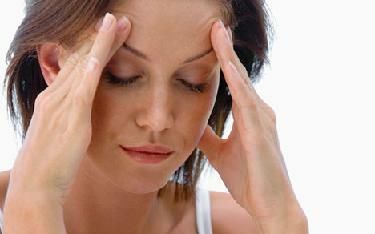
Symptoms of vegetative-vascular dystonia
In the case of vegetative-vascular dystonia, the symptoms are very diverse, which is due to the multifaceted effect on the body VNS, regulating the basic vegetative functions - breathing, blood supply, sweating, urination, digestion and other
In this regard, several groups of symptoms of vegetative-vascular dystonia in adults are distinguished by predominant disturbances in the activity of various body systems. These violations can occur in isolation or in combination with each other:
- In the cardiovascular system: violation of the heart rate (rapidity or stoppage), fluctuations in blood pressure, pain in the left half of the chest;
- In the respiratory system: sensation of lack of air, suffocation, shortness of breath, shortness of breath, rapid breathing;
- In the digestive system: nausea and vomiting reflex, flatulence, belching, heartburn, constipation and diarrhea;
- In the thermo-regulation system: chills, cold in the extremities, increased sweating, against a background of stress, a rise in temperature;
- In the vestibular system: dizziness, pre-occlusive conditions;
- In the urine-reproductive system: increased urination, pain and itching in the genital area;
- In the emotional sphere: anxiety, restlessness, phobia, increased fatigue, decreased efficiency, constant emotional stress, decreased mood background, tearfulness, appetite and sleep disorders.
The course of vegetative-vascular dystonia may be latent, may be of a permanent nature, or it may manifest paroxysmally (vegetative crises). Most often, crises occur against the background of mental and physical overstrain, with increased emotional stress, and also with various infectious diseases. Their duration can vary from a few minutes to several hours.
Attacks of exacerbation VSD
The attack of vegetative-vascular dystonia begins abruptly, suddenly. A person suddenly has a heartbeat, blood pressure rises, skin becomes pale, body temperature rises and chills develop. During an attack a person has a strong fear. After the crisis, a large amount of light urine is released and a strong weakness develops, including trembling in the legs and the inability to move normally. In the period after the crisis, a sharp drop in blood pressure is possible.
In addition, exacerbation of the AVR may occur as a vagoinsular crisis. It is characterized by the appearance of a sharp fainting, which is preceded by short-term pre-occult phenomena (for example, darkening in the eyes, noise in the head, a sharp weakness, a sense of unreality what is happening). Also, during a seizure, a person may have a sharp and severe pain in the abdomen, an imperative desire to empty the intestines, increased motor skills organs of the digestive tract, pressure reduction, bradycardia, increased sweating, as well as a feeling of heat, nausea, melancholy and pronounced fear.
Diagnostics of VSD
To understand how to treat vegetative vascular dystonia, it is necessary not only to diagnose the disease, but also to determine the cause of its development.
Therefore, in order to properly diagnose the VSD, professionalism is required, as well as the coordination of the work of such specialists as a cardiologist, neuropathologist, therapist. It is necessary to weed out other diagnoses with similar features.
For this you will have to undergo certain examinations:
- computer electroencephalography,
- electrocardiography,
- magneto-nuclear resonance,
- vegetative tests.
Of course, the diagnosis will be determined by the results of the conversation with the patient, after acquaintance with his complaints.
Treatment of vegetative-vascular dystonia
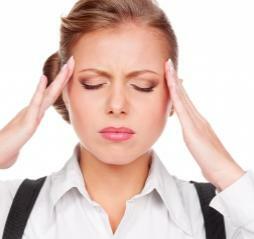 When a vegeto-vascular dystonia is detected, treatment is performed depending on the type of there is a syndrome, also the therapeutic strategy should take into account other available somatic disease.
When a vegeto-vascular dystonia is detected, treatment is performed depending on the type of there is a syndrome, also the therapeutic strategy should take into account other available somatic disease.
The complex of treatment includes medication methods of VSD and non-drug methods, which can sometimes be very effective and even replace basic medication.
Therefore, treatment with this syndrome should not begin with the use of drugs, but with a change in diet and lifestyle. It is necessary to observe:
- adequate mode of work and rest;
- balanced and healthy diet;
- adequate level of physical activity;
- rejection of bad habits;
- liquidation of occupational hazards;
- avoidance of stressful situations or development of stress resistance;
- normalization of body mass index.
The following methods also have a great effect on the cure of VSD:
- water procedures;
- reflexology;
- massotherapy.
Also, the physiotherapeutic effect will depend on the type of dysfunction of the vegetative system.
- with vagotonia, electrophoresis with calcium, caffeine and mezaton is prescribed.
- with sympathicotonia - with papaverine and bromine, magnesium and euphyllin.
If these measures, which are aimed at a restorative effect, do not help much, then prescribe pharmaceuticals. They are selected individually for each patient, begin with minimal doses and gradually bring to the desired concentration. Particular attention is paid to getting rid of chronic foci of infection in the body, the treatment of endocrine and other pathologies.
Drug medication for adults in the elderly
Treatment of vegetovascular dystonia is mainly based on symptoms. It is impossible to say exactly which drugs will be prescribed for treatment, it depends on the features of the case, they are selected only after examination of the patient.
First and foremost, antidepressants and tranquilizers are prescribed. Dosage is selected, based on the severity of symptoms. In addition, they are prescribed antihypertensives or, on the contrary, caffeine for raising blood pressure. B vitamins B, ginseng and beta-blockers are considered mandatory.
A special group in the treatment of VSD is nootropic drugs (such as Nootropil, Piracetam), which possess ability to improve energy processes and processes of blood supply to the brain, increasing the resistance of the brain to oxygen starvation. These drugs activate intellectual functions, improve memory of the brain. However, you can not take them yourself.
Consider some drugs used in the treatment of vegetative-vascular dystonia:
- Persen. Has a soothing and relaxing effect.
- New Passit. The drug of plant origin has a pronounced sedative effect, helps in the fight against fears and anxiety.
- Corvalol. Soothes the body, helps normalize sleep. Also has an easy relaxing effect.
- Valocormid. Provides spasmolytic, relaxing and cardiotonic (reducing the load on the heart) effect. Corrects the excitability of the nervous system.
- Normatens. A remedy struggling with hypertension. Also, the medicine causes vasodilation, minimizes the overall resistance of peripheral vessels. Makes physiological sleep deeper.
- Azafen. Eliminates anxiety, improves mood, eliminates sadness.
- Vinpocetine. A medicine that improves cerebral circulation. Produces a vasodilating effect.
Thus, the spectrum of drugs used to treat VSD is quite wide. This is due to the fact that, on an equal basis with the treatment of the underlying disease, it is necessary to carry out effective symptomatic therapy aimed at arresting the painful manifestations of the VSD.
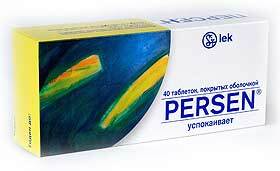
Folk treatment of vegetative vascular dystonia
The use of folk methods is classified according to the type of VSD:
- Whenvegetative disorders of the hypotonic typeapply such herbs as ginseng, aralia, sandy immortelle, zamaniha, eleutherococcus, levzeya safflower, juniper, bearberry, lemongrass Chinese, cowberry. They are designed forimprove well-being and increase pressure.
- Whendisorders of hypertonic or mixed typewidely used herbal collections and plants that have a calming effect: mint, valerian, sage, motherwort, peony root, lemon balm, hops. These herbs are the reversesoothe and lower the pressure.
Vegeto vascular dystonia is primarily a disorder of the nervous system. Therefore, in most cases, the treatment of VSD folk remedies is based on the reception of sedatives decoctions of herbs with the function of normalizing blood pressure and cardiac activity muscle.
- Taken in equal amounts, the flowers of marigold, the root and rhizome of valerian, the fruits of cumin, the motherwort, the seeds of dill, mix thoroughly. 1 hour spoon collection for 200 ml of boiling water, let stand for two hours, filter. Use in vegeto - vascular dystonia 4-5 times in 1 tbsp. spoon a day.
- We use, the proportion of juniper fruit the share of rhizomes of aira, 2 shares of rose hips, 2 parts of grass yarrow, 1 share of strawberry leaf, 1 share of Veronica herb, 1 share of St. John's wort, 1 share of chicory flowers, is mixed. Take the 2 tbsp. l. collection, add 500 ml of boiling water, insist in a thermos night. Filter and take infusion in 3 doses on an empty stomach.
- Motherwort tincture. Take 40 to 50 drops 3 to 4 times a day. In terms of effectiveness, this drug exceeds even the tincture of valerian. He relieves pain in the heart, relieves nervous shock and heartbeat.
- It is necessary to mix 200 ml of natural cahors, honey and freshly squeezed carrot, garlic, lemon, radish and beet juices. Take this medicine for 15 ml (tablespoon) for half an hour before breakfast, lunch and dinner.
- Shredded rhizome of valerian - 15 g, yarrow-50 g, lemon balm - 10 g pour 1 l of hot water, put on low heat and boil for 20 minutes, filter. To drink broth at a vegeto - vascular dystonia on 150 ml 3 times a day before meal.
- 200 g dried apricots, 25 g walnuts, raisins without seeds, figs - preferably dried, all crushed. Eat 1 time a day for 1 tbsp. spoon washed down with yogurt. The course of treatment is one month, take a break 1 week and repeat. The mixture is useful in vegetative - vascular dystonia and also has taste qualities.
- One glass of fennel seed and 10 grams of crushed dry valerian root pour 1 liter of boiling water in a thermos, allow to stand for two days, filter, then add 50 g of honey, drain. Drink 2 tablespoons. spoons before meals.
Healing herbs do not cause addiction and addiction, they can be taken for a long time. They have a soft therapeutic effect on the body; In addition, it is possible to quickly determine whether they are suitable for treatment in each specific case. Nevertheless, before the beginning of reception of national means it is necessary to specify presence of contra-indications at your doctor.
Physiotherapy
The methods of physiotherapeutic treatment of this vegetative disorder include:
- electrosleep;
- electrophoresis;
- inductothermy;
- darsonvalization;
- galvanization;
- laser therapy;
- magnetic therapy;
- aeroionotherapy.
Physiotherapy in the treatment of vegetative-vascular dystonia is aimed at regulating vascular tone, normalizing the metabolism and eliminating pain. The nature, regularity and intensity of procedures are selected by the doctor in accordance with the characteristics of the disease.
Massage
Massage with vegetoneurosis should be carried out in accordance with the type of disease. With a hypertensive type, massage of the collar zone, legs, abdomen is recommended. Shock techniques along with effleurage should be ruled out.
With antihypertensive vegetative-vascular dystonia, a dot and general massage is done using such elements as stroking, rubbing, kneading, vibration. Massage helps to normalize the functionality of the nervous system, eliminate headaches, and adjust the patient's sleep.
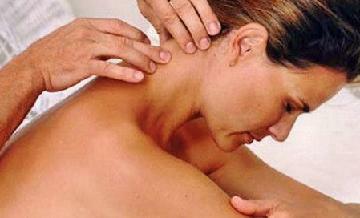
Physical exercises
Relief of the state brings daily walks in the fresh air, moderate exercise. It is especially good to visit the swimming pool regularly, swimming is recommended by all doctors. Skiing in the winter forest, hiking - everything that gives a sufficient load to the muscles and brings joy.
The latter is especially important. Classes must be fun. You can learn to dance belly dance or Latin dance. Movement to music, live communication is a wonderful cure for depression.
Prevention of IRR: How to Avoid Crises
These preventive measures will help to avoid crises, which are the ways to arise in people suffering from VSD.
First of all, it concerns the observance of certain rules:
- Rational balanced nutrition with refusal of harmful food(salty, spicy, fried, flour, sweet, fast food, etc.);
- A full night's rest(sleep should last at least 8 hours in a well-ventilated area);
- Doing sports(mandatory: 10-15-minute morning exercises and 2-3 times a week visit the sports section);
- Daily 1-2 hourswalks in the open air;
- Harmonizationwork activity and rest;
- Refusal frompernicious habits.
Thus, vegetovascular dystonia is a disease that does not pose a threat to human life, but it significantly reduces its quality. The presence of any signs of the VSD is an occasion for consultation with a specialist. After all, only timely and correct treatment is a guarantee of improvement, thereby increasing the chances of getting rid of the VSD forever.

How to choose probiotics for the intestine: a list of drugs.

Effective and inexpensive cough syrups for children and adults.

Modern non-steroidal anti-inflammatory drugs.

Review of tablets from the increased pressure of the new generation.
 Antiviral drugs are inexpensive and effective.
Antiviral drugs are inexpensive and effective.



